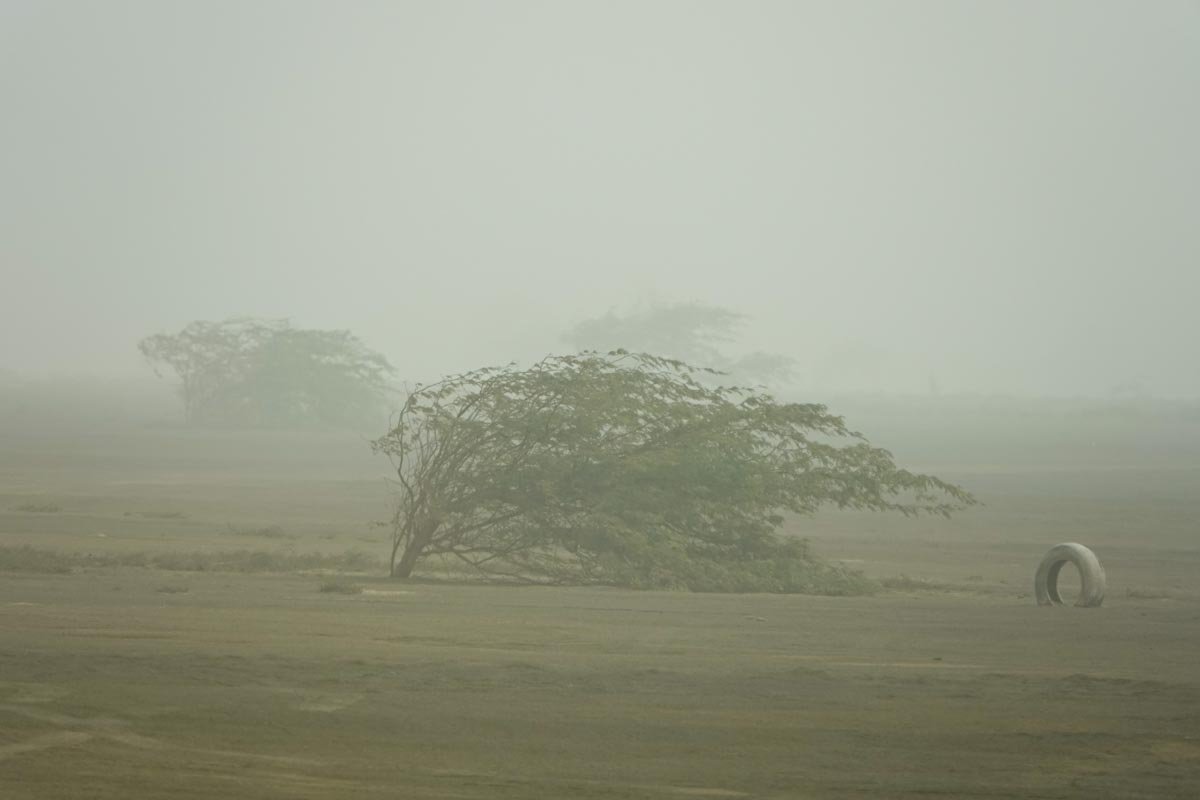Harmattan
The Harmattan is a season in West Africa that occurs between the end of November and the middle of March. We were in West Africa right in the middle of the Harmattan. It's characterized by dry and dusty northeasterly trade winds that blow from the Sahara Desert over West Africa and into the Gulf of Guinea. In addition to seeing the dust, we could smell and taste the Sahara. All I kept thinking was, "I never saw this in the brochure!"
As a reminder, we are still on Sal Island. At the point of the photo below, our local guide was pointing out a large mirage lake. He went on at some length about this mirage lake which was evidently quite impressive to see. I strained my eyes, but no luck.
Shortly after seeing the mirage lake above, we were told all about the inactive ancient volcano, seen below. I didn't get much of the information as I was straining just to see it. At least I could actually see this landmark.
At about this time, I inquired with our local guides about the haze and dust. I received several answers such as, "It never lasts more than two days," and "These are usually just for a day or two but never more than three days."
We were in West Africa for almost a month and learned that this was called the Harmattan Season. It actually lasts for about five months. BUT, before I even learned about Harmattan season, I determined, by myself, that our local guides were full of beans. How, you ask? By looking at the trees that we passed along the way in Sal. You can see some below and decide for yourself if this is just an occasional wind or a complete and regular season.
I'm not showing this to bash West Africa, but I think you should see some of what we had to deal with on this trip. It was really bad for about three days, but we dealt with the dusty wind, to some degree, almost every day of the trip.
These trees were not suddenly caught and bent over in a mighty wind on the day we visited. These trees are permanently bent over from the constant winds there.







